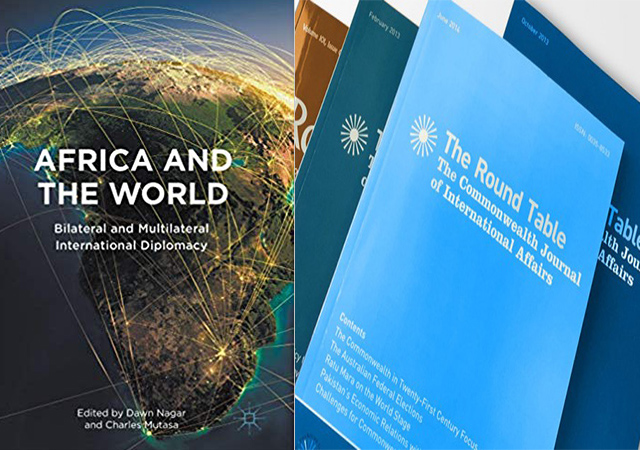
[This is an extract from a book review appearing in the current edition of The Round Table: The International Journal of Commonwealth Affairs.]
Although the book covers a wide range of partnerships, there are several diplomatic relations that are missing from the narrative. When talking about Russia’s ‘return to Africa’ (p. 59), yet another interpretation needs to be added: the post-Soviet context of international relations, including many of the member states of the European Union, which used to belong to the Eastern Bloc led by the former Soviet Union in the bipolar world. Basically no mention is made of the Central and Eastern European countries (CEECs) that have also been dynamically re-emerging across the African continent with investments, development and assistance programmes, both in bilateral and multilateral ways (the only brief reference is provided on p. 435). As for other ‘non-traditional bilateral partners’, a larger Asian pool would have been more relevant, in particular, taking into account Indonesia’s re-emergence, Thailand’s recent efforts to pierce into African markets, or the two Korea’s multi-faceted approaches. Also, instead of a brief mention (pp. 342–43), a full chapter could have been dedicated to Turkey–Africa relations.
One of the most coherent and decisive chapters is Chapter 5 about the relations between France and Africa by Douglas A. Yates, who opens with a valuable summary of the numerous critiques about France’s Africa policy, in particular, French peacekeeping interventions in Africa. He finely analyses the ‘transition between the Françafrique of yesterday and the France-Afrique of tomorrow’ (p. 97).
From the more ‘traditional’ bilateral partners, China’s place and role cannot be missed out. Concerning widely available information about China–Africa relations, Liu Haifang (Ch. 4) can add an important dimension of investigation: the importance of the diasporas and the ‘study of migration flows between China and Africa [that] has yet to be incorporated into the study of international relations on bilateral relations’ (p. 81).
Another strong piece in the volume talks about Italy’s re-entry into Africa in Chapter 8. Bernardo Venturi claims that after a ‘minimalist approach towards Africa, […] since the 1990s [Italy] began trying to make amends and re-enter Africa in a partnership based mainly on trade and security-related issues’ (p. 169). We learn about Italy’s diplomatic network and priorities, coupled with its efforts to be seen as a development actor across the continent.
One of the longest chapters is Chapter 10 about Latin-America–Africa engagement. Danilo Marcondes de Souza Neto looks at the reciprocal interests for the ‘development of foreign policy strategies’ on both sides, together with ‘some key initiatives in recent years’ (p. 209) that characterize the growing framework of relations.
Yet another valuable contribution is put forward in Chapter 13 about the African relations of Nordic countries by Anne Hammerstad. She focuses on Sweden, Denmark and Norway when seeking to address the question ‘whether Nordic Africa policies are increasingly driven by a more market-oriented and (mutual) interests-focused strategy’ (p. 287). Her conclusion is that although national Africa strategies have become more geopolitics-driven, an aid and cooperation dominated agenda has always been in the heart of the ‘Nordic model’.
In multilateral diplomatic terms, a very important analysis is presented about Africa and the ICC by Dan Kuwali in Chapter 17. One of the crucial issues he raises is what the African Union has been concerned about, the ‘Africanisation of ICC prosecution’, and the portrayal of Africa as ‘the theatre of ICC crimes’ (p. 373).
In their concluding chapter, the editors underscore one of their main messages: ‘now might be the only and perhaps even the final opportunity for Africa to reverse the global order and reset the rules of the game of international relations’ (p. 516), which we all easily understand, but may read with criticism, thinking that any international order has been slowly changing along several lines of interests of the many powerful actors of the scene.
Africa and the World is a useful work for understanding this changing global scene with all its connections and relations to the African continent, as well as how African agents have been curving out their ways within it. It is more a reference source for students of IR and African Studies, as well as scholars and academics, but may also serve as a good introductory read to a wider public.
István Tarrósy is with the University of Pécs, Hungary.
Africa and the World: Bilateral and Multilateral Diplomacy is edited by Dawn Nagar and Charles Mutasa.



